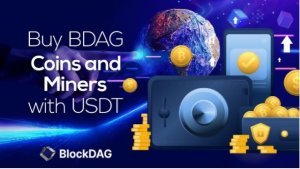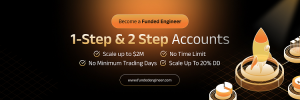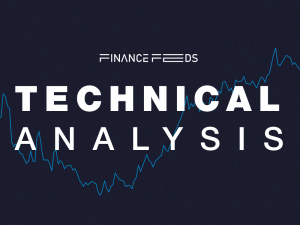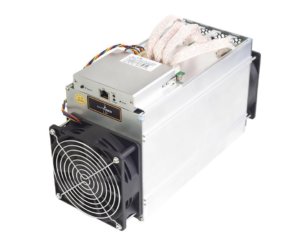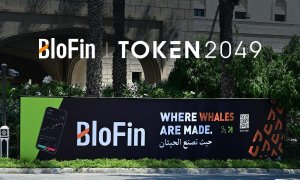deBridge: A Multi-Functional Gateway to the “Other” Blockchains
Blockchain or distributed ledger technology (DLT) has significantly improved many routine business processes and financial services. Blockchain-based digital tokens are also being used to settle transactions in a more seamless manner. We now have thousands of different blockchains that use many different types of consensus protocols and token formats to facilitate transactions on their respective networks.

Most crypto industry professionals now believe that the future of crypto and finance will consist of many independent blockchains. That’s why a number of crypto projects are heavily focused on enabling greater blockchain interoperability. This means that software developers are working on technology stacks and protocols that would allow different blockchains to exchange vital data and assets between each other in an effective manner.
These features are required because there might be certain types of assets that are available on a particular blockchain, but these assets would also be needed for transactions on another chain. Due to software incompatibility issues, digital assets can get “stuck” on a single blockchain, which can severely limit their usability.
A Truly Decentralized Standard for Cross-Chain Interoperability
An innovative project, known as deBridge, aims to offer a decentralized standard for cross-chain interoperability and liquidity transfers. As explained by its developers, deBridge allows software architects to scale up their protocol, bridge arbitrary assets, while creating different types of cross-chain interoperability apps right on top of the decentralized infrastructure.
As noted on its official website, deBridge is focused on supporting a new era of cross-chain interoperability. The platform will allow users to pass arbitrary information or transaction data so that it may be executed on the intended blockchain while carrying out cross-chain calls between various smart contracts. These tools should help with supporting a new generation of cross-chain protocols and apps that haven’t been possible before, the deBridge team claims.
At present, deBridge aims to support Ethereum (ETH), Polygon (POLY), Arbitrum, HECO, and the Binance Smart Chain (BSC).
As explained by the deBridge team, they are offering a unified standard for cross-chain transfers. They’ve noted that there’s no longer the need to identify a specific bridge for every blockchain. That’s because deBridge provides a unified or uniform standard where cross-chain transactions and swaps between any blockchain network may be carried out via a single, intuitive user interface (UI).
According to its creators, deBridge is truly decentralized and “insured by design.” As noted on its website, slashing and delegated staking mechanics are intended to make deBridge (transaction) validators financially responsible for ensuring fault-tolerance validation as well as the proper relaying of cross-chain transfers.
With deBridge, users need not bear the risk of funds getting “stuck” because these types of delays could potentially put validators’ collateral under the risk of being slashed, the developers explained.
Enabling Greater Scalability of Decentralized Applications (dApps)
As noted by its developers, the deBridge protocol allows software architects to scale up their protocol or build on top of deBridge. They’re able to effectively Interconnect components of their protocol by enabling the exchange of arbitrary information for smart contracts between various blockchains.
Through deBdrige, it’s also possible to get access to cross-chain liquidity. As explained by the development team, liquidity fragmentation should no longer be an issue with this innovative protocol. With deBridge, the liquidity in different blockchain ecosystems is readily available, the developers claim. They also pointed out that smart contracts and users are able to interact with their protocol directly from other blockchain or distributed ledger technology (DLT) networks.
In addition to these features, it’s possible to seamlessly Integrate software solutions with existing apps. As noted by its creators, the integration of deBridge into other apps allows for an enhanced user experience (UX). Users need not manually switch between networks in their wallets, because the transaction gets signed in one blockchain and then automatically executed by keepers on another chain.
deBridge also supports cross-chain interoperability for non-fungible tokens or NFTs as well as Metaverses. With this protocol, it’s now possible to bridge your NFTs between blockchains so that users can purchase/sell their game assets at different NFT marketplaces directly via game interfaces. Additionally, you can make your assets inter-operable between different Metaverses, the developers revealed.
Enabling Effective Cross-Chain Governance and Facilitating Loans
The deBridge protocol has also been designed to provide proper cross-chain governance with voting in economical blockchain or L2s while being able to settle final governance decisions on Ethereum, the world’s largest and most secure smart contract platform.
Additionally, users may issue and acquire cross-chain loans, where liquidity may be supplied into AAVE in Ethereum (ETH), the deBridge team explained. It’s also possible to obtain credit via AAVE in Polygon, and then conveniently repay the loan amount through Arbitrum.
The deBridge protocol also supports cross-chain yield farming when liquidity may be locked in one particular blockchain and rewards may get accounted for in others.
Building a New Financial Ecosystem
DeFi protocols such as deBridge could play a key role in the future financial system, which should be a lot more decentralized and permissionless than the existing financial services sector. These open-source protocols are being designed to enable a borderless and all-digital economy that will allow large amounts of value to be transferred between independent blockchains operating based on different consensus mechanisms and token formats.
These technicalities will get abstracted away so that users can focus on conducting seamless digital transactions in an instant manner, while not having to worry about the complex nature of the underlying implementation of these sophisticated DeFi apps.



